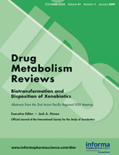
DRUG METABOLISM REVIEWS
Scope & Guideline
Pioneering insights into therapeutic applications.
Introduction
Aims and Scopes
- Drug Metabolism Mechanisms:
Explores the biochemical processes and enzymatic pathways involved in the metabolism of drugs, including phase I and phase II reactions, and the role of cytochrome P450 enzymes. - Pharmacogenetics and Drug Interactions:
Investigates the genetic factors influencing drug metabolism and the implications of drug-drug and drug-gene interactions on therapeutic outcomes and adverse effects. - Transport Mechanisms in Drug Disposition:
Focuses on the role of drug transporters in pharmacokinetics, including absorption, distribution, and elimination processes, and their impact on drug efficacy and safety. - Toxicology and Hepatotoxicity:
Addresses the potential toxic effects of drugs and their metabolites, particularly focusing on hepatotoxicity and the mechanisms underlying drug-induced liver injury. - Biotransformation Research:
Covers advances in biotransformation studies, including novel methodologies for assessing drug metabolism and the development of predictive models for drug interactions. - Regulatory and Clinical Implications:
Discusses regulatory guidelines and clinical considerations related to drug metabolism, including in vitro and in vivo methodologies and their translation to clinical practice.
Trending and Emerging
- Pharmacogenomics and Personalized Medicine:
There is a notable increase in research exploring pharmacogenomics, emphasizing how genetic variations affect drug metabolism and response, thereby supporting the movement towards personalized medicine. - Drug Transporter Studies:
Emerging interest in the role of drug transporters in drug disposition and interactions is evident, highlighting their significance in pharmacokinetics and the blood-brain barrier. - Innovative Drug Delivery Systems:
Research on novel drug delivery systems, including nanocarriers and biopolymers, is trending, focusing on improving bioavailability and targeting specific sites, particularly in cancer therapy. - Impact of Gut Microbiota on Drug Metabolism:
An increasing number of studies are exploring how gut microbiota influences drug metabolism and pharmacokinetics, signifying a growing recognition of the microbiome's role in drug response. - Advanced In Vitro and In Vivo Models:
The development of sophisticated in vitro and in vivo models for studying drug metabolism and toxicity is on the rise, as researchers seek better predictive tools for clinical outcomes.
Declining or Waning
- Natural Product Drug Interactions:
Research on the pharmacokinetic interactions involving natural products has decreased, possibly due to a growing emphasis on synthetic drug development and biopharmaceuticals. - General Toxicogenomics:
While still relevant, the broad application of toxicogenomics in drug metabolism studies has seen a reduction in publications, as researchers increasingly focus on specific mechanisms and pathways. - Traditional Pharmacokinetics:
The traditional approaches to pharmacokinetics are being overshadowed by novel methodologies and advanced technologies, leading to fewer publications centered on classical pharmacokinetic principles. - Basic Mechanisms of Drug Resistance:
Studies focused solely on the basic mechanisms of drug resistance, without integration into broader clinical or translational contexts, have become less frequent as the field shifts towards targeted therapies and personalized medicine.
Similar Journals

Clinical Pharmacology in Drug Development
Elevating drug development through peer-reviewed excellence.Clinical Pharmacology in Drug Development, published by WILEY, is a distinguished journal dedicated to advancing the field of pharmaceutical science and drug development. With a strong commitment to disseminating cutting-edge research, this journal serves as a crucial platform for professionals, researchers, and students aiming to enhance their understanding of pharmacological principles and innovations in medical therapeutics. Since its inception in 2012, the journal has consistently maintained a noteworthy presence in the academic community, currently achieving a Q2 ranking in both Pharmaceutical Science and Medical Pharmacology categories as of 2023. Although the journal operates under a subscription model, it is highly regarded for its rigorous peer-reviewed publications, offering insights into drug efficacy, safety, and regulatory challenges. Positioned at the intersection of clinical practices and pharmaceutical advancements, Clinical Pharmacology in Drug Development plays an essential role in bridging the gap between scientific research and real-world application, ensuring that the latest therapeutic strategies are optimized for patient care.
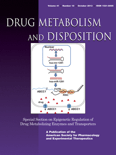
DRUG METABOLISM AND DISPOSITION
Exploring the Frontiers of PharmacologyDrug Metabolism and Disposition is a premier journal published by the American Society for Pharmacology and Experimental Therapeutics, focusing on crucial advancements in the fields of pharmaceutical sciences and pharmacology. Since its inception in 1973, this esteemed journal has established itself as a leading platform for innovative research, earning a prestigious Q1 rating in both Pharmaceutical Science and Pharmacology categories as of 2023. With an impressive Scopus ranking of #52 out of 183 in Pharmaceutical Science and #105 out of 313 in Pharmacology, it occupies a vital place in an increasingly competitive academic landscape. Researchers, professionals, and students alike benefit from its rigorous peer-reviewed articles that delve into drug metabolism processes and their physiological implications, making it an indispensable resource for anyone aiming to advance their understanding of drug disposition and efficacy. This crucial journal contributes significantly to the ongoing dialogue in pharmacology and toxicology, providing insights that help shape future therapeutic strategies and regulatory policies.
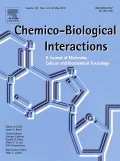
CHEMICO-BIOLOGICAL INTERACTIONS
Bridging Disciplines to Enhance Public SafetyCHEMICO-BIOLOGICAL INTERACTIONS is a premier journal published by Elsevier Ireland Ltd, dedicated to advancing the field of chemical and biological interactions since its inception in 1969. With a robust focus on pharmacology and toxicology, the journal holds a prestigious Q1 ranking in both Medicine (miscellaneous) and Toxicology, reflecting its significance in disseminating influential research. As part of the Scopus database, it ranks #21 out of 133 journals in Toxicology, positioning it in the 84th percentile and ensuring high visibility for cutting-edge studies. This scholarly platform serves as a crucial resource for researchers, professionals, and students who seek reliable and innovative findings at the intersection of chemistry and biology. While currently not open access, CHEMICO-BIOLOGICAL INTERACTIONS provides a comprehensive collection of articles that contribute to the ongoing dialogue in toxin research and its implications on medicinal chemistry, thereby fostering advancements in public health and safety.

BMC Pharmacology & Toxicology
Unveiling the complexities of drug action and safety.Welcome to BMC Pharmacology & Toxicology, a premier open-access journal dedicated to advancing the fields of pharmacology and toxicology. Published by BMC since 2012, this esteemed journal offers a platform for researchers, professionals, and students to disseminate cutting-edge research and innovative findings that explore the intricate interactions between drugs and biological systems. With its robust Q2 ranking in both general medicine and pharmacology categories for 2023, BMC Pharmacology & Toxicology is recognized for its significant contributions to the academic community, reflected in its strategic positioning within the 61st and 49th percentiles in Scopus rankings for related disciplines. The journal's commitment to open access ensures that vital research is accessible to a global audience, fostering collaboration and informed discussions. We invite you to engage with the latest studies, reviews, and innovative methodologies that shape the future of pharmacological and toxicological sciences.

CLINICAL PHARMACOKINETICS
Unveiling the Future of PharmacotherapyCLINICAL PHARMACOKINETICS, published by ADIS INT LTD, is a premier journal dedicated to the field of pharmacology, with a distinguished reputation since its inception in 1976. With an impressive impact factor and categorized in the Q1 quartile for both general pharmacology and medical pharmacology, this journal ranks #29 out of 272 and #53 out of 313 in its respective categories in Scopus, highlighting its high academic influence and the quality of research it publishes. CLINICAL PHARMACOKINETICS serves as a vital resource for researchers, professionals, and students interested in the latest advancements in drug metabolism, therapeutic efficacy, and clinical applications of pharmacokinetic studies. As it continues to evolve through 2024 and beyond, the journal remains committed to fostering a deeper understanding of pharmacotherapy and its implications in clinical practice. While it does not currently offer open access, the journal ensures that cutting-edge research is accessible through various academic platforms.
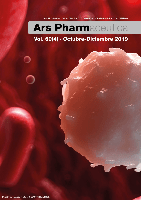
Ars Pharmaceutica
Exploring the depths of pharmacology and toxicology.Ars Pharmaceutica is a distinguished open-access journal published by UNIV GRANADA, EDITORIAL, that has been at the forefront of pharmaceutical sciences since its establishment. With ISSN 0004-2927 and E-ISSN 2340-9894, this journal aims to disseminate high-quality research in pharmacology, toxicology, and pharmaceutics, contributing to the advancement of the field. With a historical scope that spans from 1980 to 2017, it has played a pivotal role in shaping the discourse surrounding pharmaceutical science and its intersection with the arts and humanities. Although currently ranked within the 13th percentile in Scopus for Pharmaceutical Science and the 11th percentile for History and Philosophy of Science, Ars Pharmaceutica continues to uphold its commitment to academic excellence and innovation. By providing a platform for open-access research, it encourages collaboration and knowledge sharing among researchers, professionals, and students, thus enhancing the broader understanding of pharmaceutical developments and their societal implications.

PHARMACEUTICAL RESEARCH
Pioneering research that transforms healthcare and therapeutics.PHARMACEUTICAL RESEARCH, published by SPRINGER/PLENUM PUBLISHERS, is a leading journal in the ever-evolving field of pharmaceutical sciences. With an ISSN of 0724-8741 and an E-ISSN of 1573-904X, this journal has established itself as a critical hub for disseminating innovative research from 1984 to 2024. The journal holds impressive rankings in prominent categories, including Q2 in Biotechnology and Q2 in Pharmaceutical Science, reflecting its robust impact on the global scientific community. The journal aims to provide researchers, professionals, and students with high-quality articles that contribute significantly to the advancement of drug development and medicinal applications. Although it does not currently offer Open Access options, its rigorous peer-review process ensures that only the highest caliber research is published, making it a valuable resource for those seeking to stay at the forefront of pharmaceutical innovation.
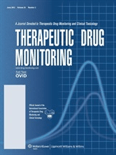
THERAPEUTIC DRUG MONITORING
Pioneering the Future of Therapeutic Drug ManagementTHERAPEUTIC DRUG MONITORING, published by Lippincott Williams & Wilkins, is a prestigious journal that focuses on the critical area of pharmacology, with a specific emphasis on the therapeutic optimization of drug therapy. With an ISSN of 0163-4356 and an E-ISSN of 1536-3694, this peer-reviewed journal has been contributing valuable research and insights to the field since its inception in 1979. As of 2023, it holds a Q2 classification in the Pharmacology category, indicating its prominent role in advancing pharmaceutical sciences. The journal aims to enhance understanding of drug effectiveness and safety through rigorous studies on drug monitoring and individualized therapy, making it an essential resource for researchers, healthcare professionals, and students dedicated to improving patient care. With its solid standing reflected in Scopus rankings, including a rank of #103 in medical pharmacology and a 62nd percentile, THERAPEUTIC DRUG MONITORING continues to be a vital publication for those aiming to contribute to and stay informed about the latest developments in the field.
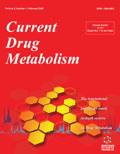
CURRENT DRUG METABOLISM
Fostering Knowledge for Enhanced Pharmacological PracticesCURRENT DRUG METABOLISM, published by Bentham Science Publishers Ltd, serves as a pivotal resource in the fields of Clinical Biochemistry and Pharmacology. With an ISSN of 1389-2002 and an E-ISSN of 1875-5453, this journal has carved a niche since its inception in 2000, offering in-depth research and reviews that bridge the gap between drug metabolism and its clinical applications. The journal finds itself positioned in the third quartile (Q3) for both Clinical Biochemistry and Pharmacology as of 2023, reflecting its significance within these scientific sectors, with Scopus rankings showcasing its role in advancing knowledge—rank #167 in Pharmacology and #66 in Clinical Biochemistry. Researchers and industry professionals are encouraged to contribute their findings, fostering a diverse platform that informs and inspires innovations in drug development and safety. While CURRENT DRUG METABOLISM operates under a traditional subscription model without open access, its rigorous peer-review process ensures the quality and integrity of the published work, making it indispensable for anyone engaged in drug research and biochemistry.

European Journal of Pharmacology
Fostering interdisciplinary collaboration in the realm of pharmacology.The European Journal of Pharmacology, a prestigious publication by Elsevier, serves as a vital resource in the field of pharmacology, offering rich insights into drug development and therapeutic applications. Since its inception in 1967, this journal has evolved to encompass groundbreaking research, including pharmacokinetics, toxicology, and innovative pharmacological methodologies, making it an essential platform for researchers and professionals alike. With an impressive impact factor that places it in the Q1 category of pharmacological journals and a Scopus ranking of #49 out of 313, the journal is recognized in the 84th percentile within its category, solidifying its significance in the academic community. Although the journal is not open access, it continues to attract contributions from leading scientists worldwide, ensuring that cutting-edge findings are disseminated effectively. The European Journal of Pharmacology not only highlights advancements in drug discovery and clinical applications but also promotes interdisciplinary collaboration, ultimately contributing to the progress of healthcare globally.